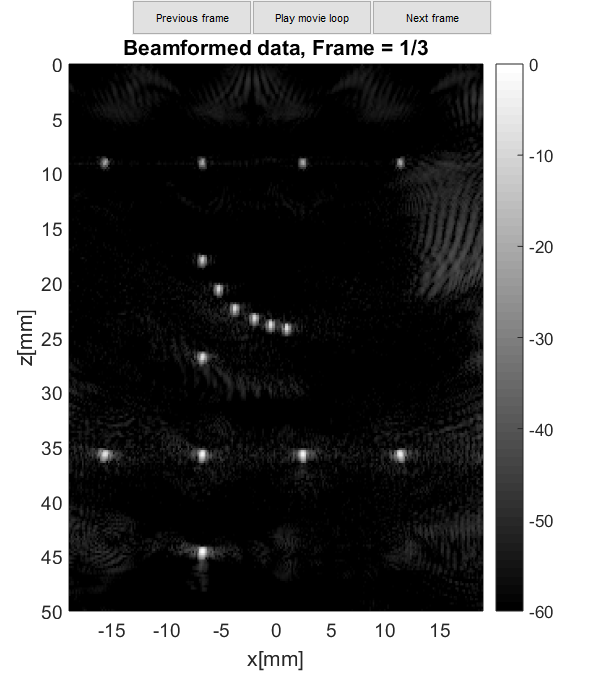Reading data from an UFF file recorded with the Verasonics CPWC_L7 example
In this example we show how to read channel and beamformed data from a UFF (Ultrasound File Format) file recorded with the Verasonics example. You will need an internet connectionto download data. Otherwise, you can run the CPWC_L7.m Verasonics example so the file 'L7_CPWC_193328.uff' is in the current path.
by Alfonso Rodriguez-Molares alfonso.r.molares@ntnu.no and Ole Marius Hoel Rindal olemarius@olemarius.net 15.05.2017
Contents
Checking the file is in the path
To read data from a UFF file the first we need is, you guessed it, a UFF file. We check if it is on the current path and download it from the USTB websever.
% data location url='http://ustb.no/datasets/'; % if not found data will be downloaded from here local_path = [ustb_path(),'/data/']; % location of example data in this computer addpath(local_path); filename='L7_CPWC_193328.uff'; % check if the file is available in the local path & downloads otherwise tools.download(filename, url, local_path);
Reading channel data
Now that the file is on the path let us create a UFF object to interact with the file. We open it in "append" mode.
uff_file=uff(filename)
uff_file =
uff with properties:
filename: 'L7_CPWC_193328.uff'
version: 'v1.0.1'
mode: 'append'
verbose: 1
Let's first check if we are lucky and the file allready contains beamformed_data that we can display.
display=true; content = uff_file.index('/',display); has_b_data = false; for i = 1:length(content) if strcmp(content{i}.class,'uff.beamformed_data') has_b_data = true; % We found a beamformed data object! end end
UFF: Contents of L7_CPWC_193328.uff at / - /b_data: b_data [uff.beamformed_data] size(1,1) - /channel_data: channel_data [uff.channel_data] size(1,1)
If it doesn't have any beamformed data at least it should have some channel_data. So let's read that. If the file did have beamformed data, will will jump straight to the display part later on :)
if ~has_b_data
channel_data=uff_file.read('/channel_data');
And then the normal routine of defining the scan,
sca=uff.linear_scan();
sca.x_axis = linspace(channel_data.probe.x(1),channel_data.probe.x(end),256).';
sca.z_axis = linspace(0,50e-3,256).';
setting up and running the beamforming
bmf=beamformer();
bmf.channel_data=channel_data;
bmf.scan=sca;
bmf.receive_apodization.window=uff.window.none;
bmf.receive_apodization.f_number=1.7;
bmf.receive_apodization.apex.distance=Inf;
bmf.transmit_apodization.window=uff.window.none;
bmf.transmit_apodization.f_number=1.7;
bmf.transmit_apodization.apex.distance=Inf;
b_data=bmf.go({process.delay_matlab process.coherent_compounding});
Now we can save this beamformed image to that file, so that we don't have to wait for the beamforming again.
uff_file.write(b_data,'b_data');
end
And finally display the image.
b_data.plot();
